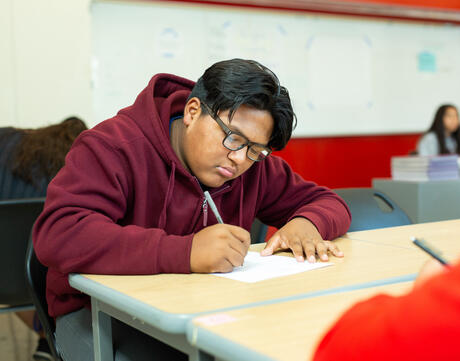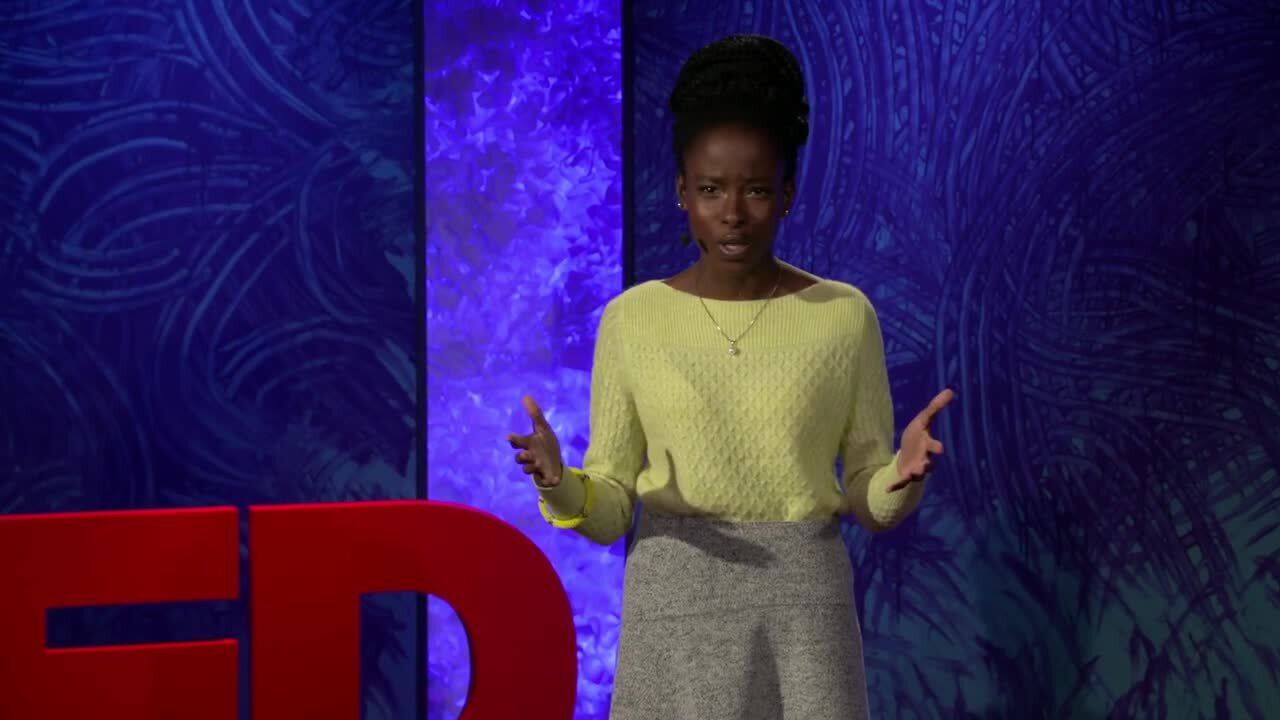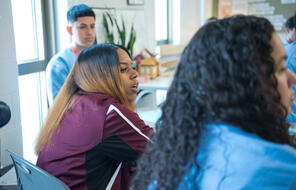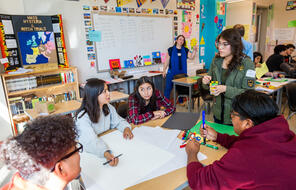
Poetry and Power
At a Glance
Language
English — USSubject
- English & Language Arts
Grade
6–12- Culture & Identity
Overview
About This Learning Experience
In the words of former Poet Laureate Tracy K. Smith, “Poetry is quiet, private, meditative, and rather than summing things up in pat and predictable ways, it surprises and deepens our sense of the ordinary. Poetry tells us that the world is full of wonder, revelation, consolation, and meaning. It reminds us that our inner lives deserve time, space, and attention.” Nestled within a larger literature unit, poetry can help students explore and connect with issues of identity and belonging, prejudice, and social justice, as well as provide inspiration for how they might use their voice to tell their own stories in unique and powerful ways.
The following learning experiences invite close reading and offer opportunities for students to craft short poetic mantras, found and blackout poems, and their own original poems. The goal is not for students to create publishable or performance-ready poetry. Rather, we hope that they will consider how poetry can serve as a powerful means of creative expression that can captivate an audience and inspire change. And we hope that they will take to heart poet Amanda Gorman’s words: that poetry “is the language of people,” a language students can use to raise their voices to tell their own stories and to make themselves heard on issues that matter to them.
Preparing to Teach
A Note to Teachers
Before using this learning experience, please review the following information to help guide your preparation process.
Procedure
Activities
Materials and Downloads
Quick Downloads
Download the Files
Get Files Via Google
Unlimited Access to Learning. More Added Every Month.
Facing History & Ourselves is designed for educators who want to help students explore identity, think critically, grow emotionally, act ethically, and participate in civic life. It’s hard work, so we’ve developed some go-to professional learning opportunities to help you along the way.
Exploring ELA Text Selection with Julia Torres
On-Demand

Working for Justice, Equity and Civic Agency in Our Schools: A Conversation with Clint Smith
On-Demand

Centering Student Voices to Build Community and Agency
On-Demand
















